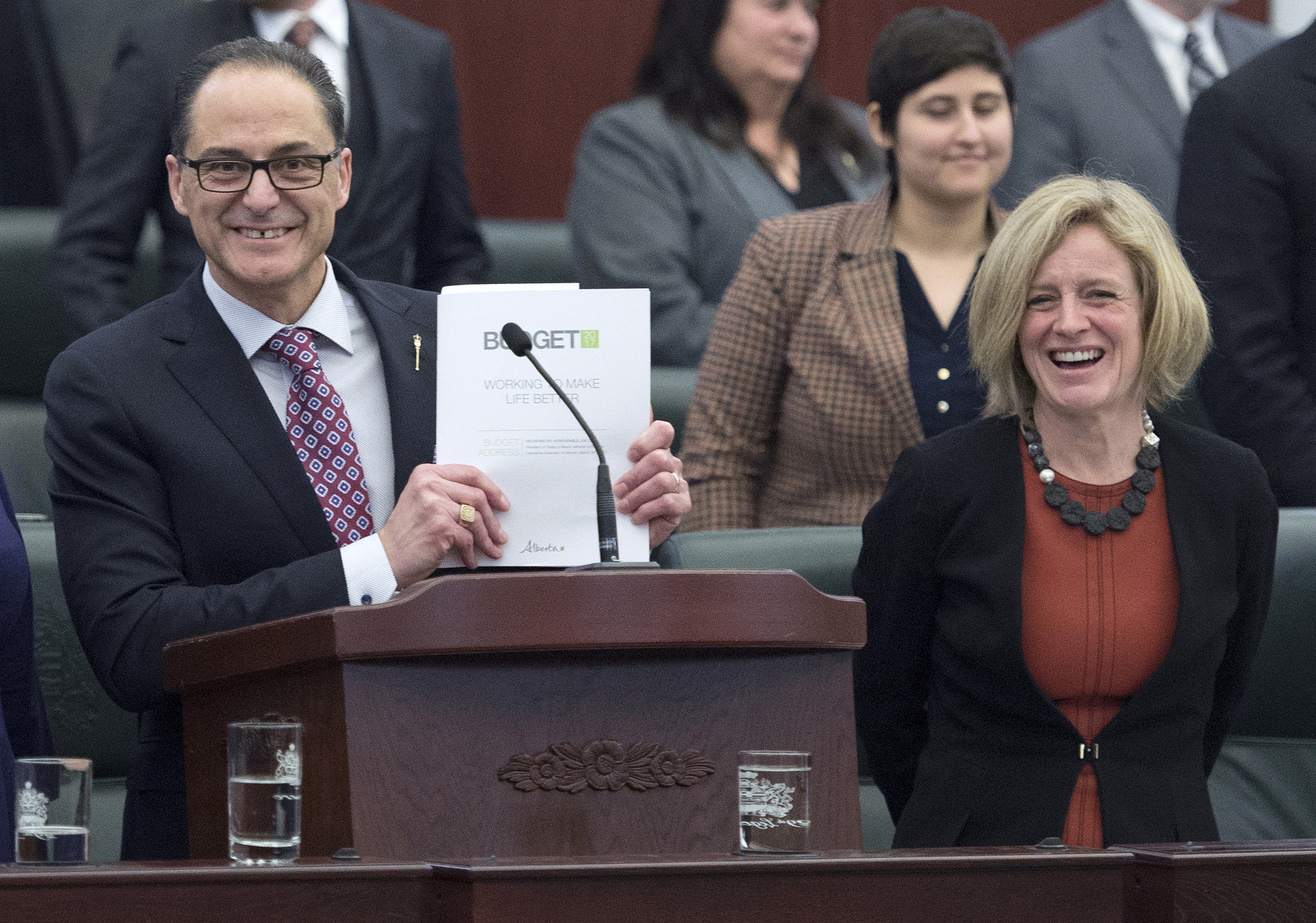An Alberta-based volunteer working group, of which I’m a part, recently released a document titled Foundations for an Alberta Alternative Budget (for media coverage, see this Metro article). Working group members include staff from Alberta’s non-profit sector, labour movement and advocacy sector. While our long-term goal is to emulate the great work of the Alternative Federal Budget, this year’s effort has resulted in a relatively short document that seeks to lay the foundation for what future Alberta budgets might look like.
Here are 10 things to know.
-
This exercise brought people and groups together for the first time. While some participants knew each other before, most didn’t. A major reason new people were able to meet each other is that Joel French (Executive Director of Public Interest Alberta) made invaluable introductions. His wealth of advocacy experience put him in the position to be able to do this. Thanks Joel!
-
We didn’t seek organizational endorsements of the document. Nor did we ask volunteers who assisted with the effort to stipulate whether or not they were formally representing their respective organizations when they assisted. Organizations like to carefully consider the advantages and disadvantages of making formal endorsements, and we didn’t want to push anyone to ‘put their cards on the table’ too quickly. Since this is a new initiative, we wanted to give organizations an opportunity to reflect on what this year’s document ended up looking like. We hope this will help groups carefully consider the possibility of more formal participation in future efforts.
-
The document discusses important initiatives already taken by the NDP government of Premier Rachel Notley. For example, since taking office in 2015, the NDP government of Premier Notley has implemented the Alberta Child Benefit (which will lift approximately 19,000 households out of poverty), made substantial increases in funding for affordable housing (see point #5 of this May 2016 blog post), and increased the provincial minimum wage.
-
The longest section of this year’s document is the section looking at Alberta’s macroeconomic context. Its opening sentence is blunt: “Alberta’s public services are strained due to decades of underfunding from previous governments and the province’s dependence on inherently volatile energy markets.” It later states that Alberta has just gone through its worst recession in over 30 years (due to the collapse in global oil prices). Yet, it makes the point that Alberta’s net debt-to-GDP ratio remains considerably lower than that of any other province.
-
Even though the Notley government has increased some tax rates, Alberta still has the lowest rate of taxation in Canada. Taxes paid by Albertans to their provincial government, on an annual basis, amount to less than eight per cent of total income; that’s the lowest rate in Canada. Even with recent tax increases brought in by the Notley government, Albertans as a whole still pay less in provincial taxes each year (as a share of their total income) than residents of any other Canadian province. It’s also worth noting that Alberta remains the only Canadian province without a provincial sales tax. The macroeconomic section of this year’s document reminds readers that if Alberta adopted a tax structure similar to the next lowest-taxed province in the country (Saskatchewan) the province would generate an additional $7.5 billion in annual revenue.
-
Alberta’s per-capita health care spending, in relation to its Gross Domestic Product (GDP), is the lowest in Canada. On the one hand, health care makes up a growing proportion of the provincial budget (in 2016, approximately 40 per cent of the total provincial budget was committed to health). However, Alberta’s per-capita health spending as a percentage of GDP remains the lowest of any Canadian province.
-
The Notley government has taken important steps forward on education, but hasn’t fully delivered on its election promises. During the 2015 provincial election campaign, the Alberta NDP promised two programs which have not yet been implemented. Indeed, $45 million was promised to reduce school fees paid by parents, while $75 million was promised to reduce class sizes and enhance supports for “inclusive education.” The document recommends that the provincial government live up to these election promises.
-
In spite of Alberta’s relative affluence, social assistance recipients do not receive enough money to live on. The document’s section on poverty notes that a “single employable person” receiving social assistance in Alberta receives less than $8,000 annually to live on. The document also draws on previous research arguing that even a modest increase in social assistance benefit levels would likely reduce demand for emergency shelter beds in the province.
-
The document discusses the challenges involved when persons with serious disabilities attempt to apply for Alberta Income for the Severely Handicapped (AISH) benefits. Indeed, AISH has received criticism from the Auditor General of Alberta for being too challenging a system to navigate. It should be noted, however, that relative to comparable programs in other provinces, AISH benefit levels — for those who manage to qualify for them — are high (see Table 3 in this report).
-
The document discusses the importance of moving away from an economy so heavily dependent on oil. A section titled “Economic Diversification and Development” makes the case that future economic growth should not be focused so much on oil. It suggests a framework for future economic growth that focuses on the following five factors: 1) the environment; 2) export potential; 3) marginalized households; 4) “just transition;” and 5) oil price dependency. (Similar analysis at the national level appears in the “Sector Development Policy” chapter of the Alternative Federal Budget.)
This was a team effort that came together quite quickly. We hope this becomes an annual exercise that results in actual “alternative budgets” in future years. Anyone wishing to participate in next year’s exercise should send an email to [email protected].
This article originally appeared on Progressive Economics.
Please chip in to keep stories like these coming.
Image: Flickr/Premier of Alberta




